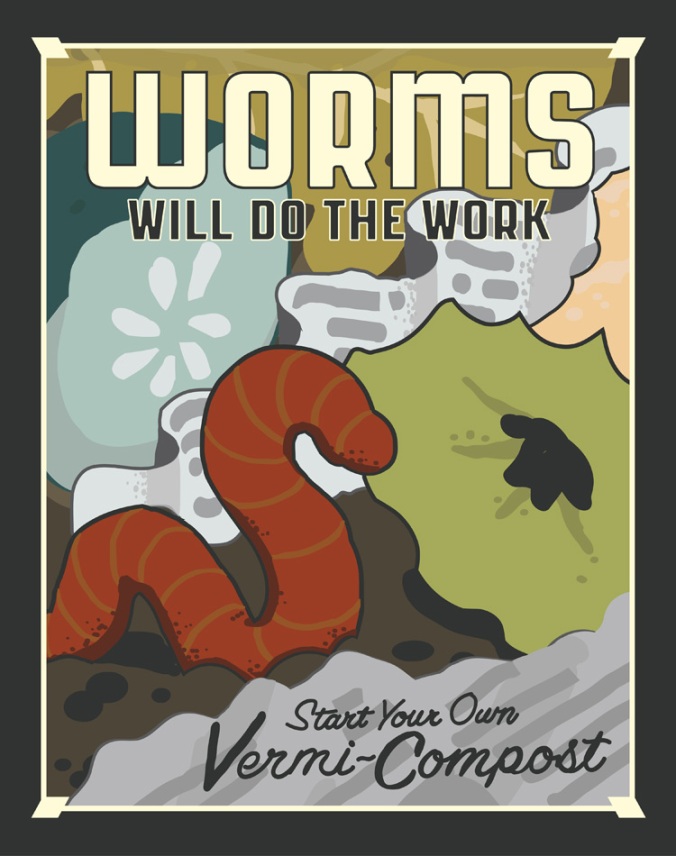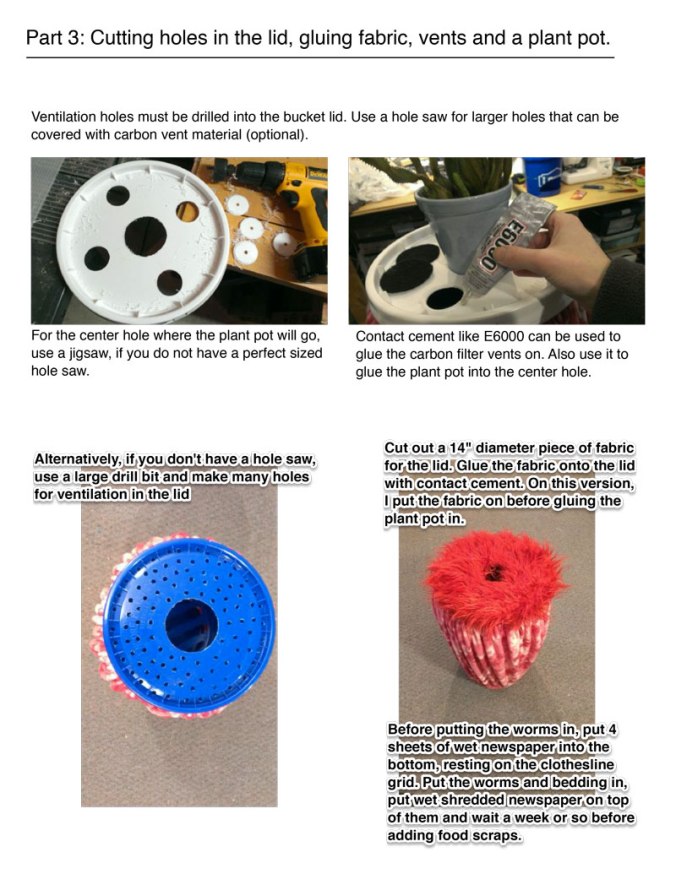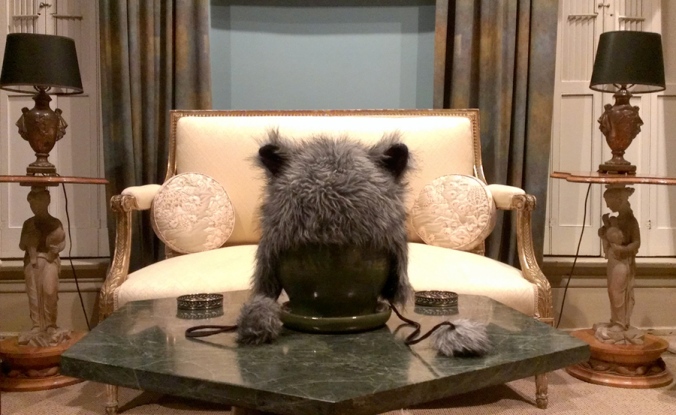
We at WormCulture are honored that the Portland Oregon designer Joe Wirtheim created a propaganda poster for worms. It is a new addition to his long-running series called The Victory Garden of Tomorrow. It includes several space age chickens, plants and people and you can see the whole series on his website. We are told that this new poster, Worms will do the Work will eventually be available for purchase there.
Joe says: “this project is committed to civic innovation and social progress — better food, better gardens, and better cities. I get really excited about edible school gardens, city bicycles, home cooking, backyard chickens, beekeeping, rooftop gardens and really anything that brings health and activity to people’s lives. I love looking at vintage graphics, especially mid-century propaganda and advertising.”
About this design: “I’m inspired by the power and relentless energy of such a small creature. As described by Youngs and the Worm Culture blog, these creatures and their microbe allies take our discards and attack them with vigor. The result is a valuable resource for any gardener. I wanted to show our Red Wriggler in a heroic light among their work; cute, harmless and in our service.”



 What is an e-worm? Is lumbricina or commonly know as earthworm. Why do we call it e-worm? Because worms are associated with many parasites that are harmful to humans, but by adding the letter e at the beginning of the word, we want to linguistically reclassify the identity and the function of the worm in contemporary urban culture. The sound of the prefix e gives the word a new meaning that is social and psychologically accepted; after all we all have an e-mail account.
What is an e-worm? Is lumbricina or commonly know as earthworm. Why do we call it e-worm? Because worms are associated with many parasites that are harmful to humans, but by adding the letter e at the beginning of the word, we want to linguistically reclassify the identity and the function of the worm in contemporary urban culture. The sound of the prefix e gives the word a new meaning that is social and psychologically accepted; after all we all have an e-mail account. The project started in our home in Quito, Ecuador. We start by composting our food scraps by bacterial fermentation. This research let us to worms for speeding up the composting process, as well as to increase the quality of the compost. Now we need more food scraps to feed the hungry e-worm. We are asking our neighbors to be part of this project by keeping their food scraps. People are intrigued by what we are doing so we want to teach them about gardening, composting and e-worms. If you like our project, we would use the funds in two ways: 1.) a roof to cover our e-worm tanks and 2.) buckets for food scrap collection from our neighborhood. We are also designing a web site to make our process available to more people that might think that because they are living in big metropolitan areas they have no choices for their food supplies.
The project started in our home in Quito, Ecuador. We start by composting our food scraps by bacterial fermentation. This research let us to worms for speeding up the composting process, as well as to increase the quality of the compost. Now we need more food scraps to feed the hungry e-worm. We are asking our neighbors to be part of this project by keeping their food scraps. People are intrigued by what we are doing so we want to teach them about gardening, composting and e-worms. If you like our project, we would use the funds in two ways: 1.) a roof to cover our e-worm tanks and 2.) buckets for food scrap collection from our neighborhood. We are also designing a web site to make our process available to more people that might think that because they are living in big metropolitan areas they have no choices for their food supplies.
 Worm Cozies are designed to help humans feel more comfortable hosting worms in their homes. Based on the concept of appliance cozies, which were originally created as a way to hide the sight of garish machines inside the domestic space of the kitchen, these worm cozies similarly function as a softening interface that will help us get used to the idea of living with worm ecosystems.
Worm Cozies are designed to help humans feel more comfortable hosting worms in their homes. Based on the concept of appliance cozies, which were originally created as a way to hide the sight of garish machines inside the domestic space of the kitchen, these worm cozies similarly function as a softening interface that will help us get used to the idea of living with worm ecosystems.




